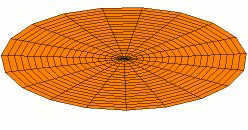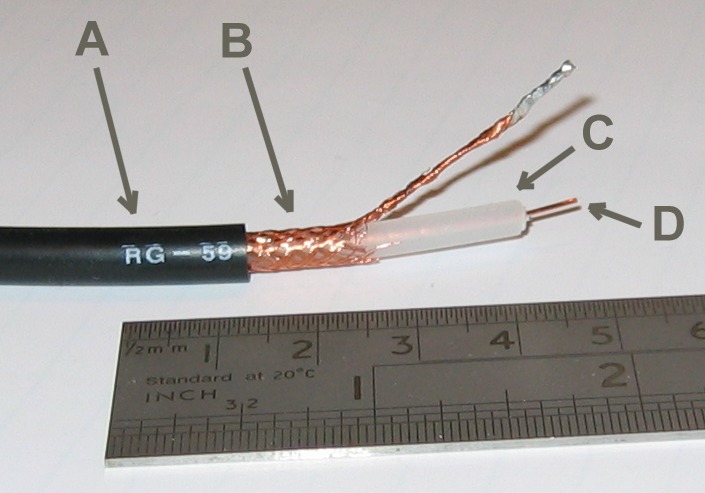|
Crimp (joining)
Crimping is a method of joining two or more pieces of metal or other Ductility, ductile material by Deformation (engineering), deforming one or both of them to hold the other. The bend or deformity is called the crimp. Crimping tools are used to create crimps. Crimping is used extensively in metalworking, including to contain bullets in cartridge (weaponry), cartridge cases, for Crimp connection, electrical connections, and for securing lids on canning, metal food cans. Because it can be a cold-working technique, crimping can also be used to form a strong bond between the workpiece and a non-metallic component. It is also used to connect two pieces of food dough. Tools A crimping tool or crimp tool is used to create crimps. Crimping tools range in size from small handheld devices, to benchtop machines used for industrial purposes, to large fully-automatic wire processing machines for high-volume production. For electrical crimps, a wide variety of crimping tools exist, and the ... [...More Info...] [...Related Items...] OR: [Wikipedia] [Google] [Baidu] |
Crimp Tool For Bootlace Ferrules
Crimp or crimping may refer to: *Crimp (climbing), a small hold with little surface area *Crimp (gambling), a bent corner of a card to facilitate cheating *Crimp (joining), a deformity in metal or food dough used to make a joint. Commonly used to connect electrical components. *Crimp (recruitment) or shanghaiing, to shanghai or conscript men as sailors *A style of song in the British comedy series The Mighty Boosh (TV series), ''The Mighty Boosh'' *Crimp (wool), the number of bends per unit of length *Crimp (electrical), a type of solderless connection *Crimping pliers, tools for squeezing things together *Grain crimping, an organic way to preserve feed grain *Hair crimping, a method of styling hair *Staple remover, also known as a "crimper" *Crimp, Cornwall, a hamlet in England, United Kingdom *Douglas Crimp (1944-2019), American writer, curator, and art historian *Martin Crimp (born 1956), British playwright {{disambig ... [...More Info...] [...Related Items...] OR: [Wikipedia] [Google] [Baidu] |
Vibration
Vibration () is a mechanical phenomenon whereby oscillations occur about an equilibrium point. Vibration may be deterministic if the oscillations can be characterised precisely (e.g. the periodic motion of a pendulum), or random if the oscillations can only be analysed statistically (e.g. the movement of a tire on a gravel road). Vibration can be desirable: for example, the motion of a tuning fork, the reed in a woodwind instrument or harmonica, a mobile phone, or the cone of a loudspeaker. In many cases, however, vibration is undesirable, wasting energy and creating unwanted sound. For example, the vibrational motions of engines, electric motor An electric motor is a machine that converts electrical energy into mechanical energy. Most electric motors operate through the interaction between the motor's magnetic field and electric current in a electromagnetic coil, wire winding to gene ...s, or any Machine, mechanical device in operation are typically unwanted. ... [...More Info...] [...Related Items...] OR: [Wikipedia] [Google] [Baidu] |
Static Friction
Friction is the force resisting the relative motion of solid surfaces, fluid layers, and material elements sliding against each other. Types of friction include dry, fluid, lubricated, skin, and internal -- an incomplete list. The study of the processes involved is called tribology, and has a history of more than 2000 years. Friction can have dramatic consequences, as illustrated by the use of friction created by rubbing pieces of wood together to start a fire. Another important consequence of many types of friction can be wear, which may lead to performance degradation or damage to components. It is known that frictional energy losses account for about 20% of the total energy expenditure of the world. As briefly discussed later, there are many different contributors to the retarding force in friction, ranging from asperity deformation to the generation of charges and changes in local structure. When two bodies in contact move relative to each other, due to these various ... [...More Info...] [...Related Items...] OR: [Wikipedia] [Google] [Baidu] |
Tension (physics)
Tension is the pulling or stretching force transmitted axially along an object such as a string, rope, chain, rod, truss member, or other object, so as to stretch or pull apart the object. In terms of force, it is the opposite of ''compression''. Tension might also be described as the action-reaction pair of forces acting at each end of an object. At the atomic level, when atoms or molecules are pulled apart from each other and gain potential energy with a restoring force still existing, the restoring force might create what is also called tension. Each end of a string or rod under such tension could pull on the object it is attached to, in order to restore the string/rod to its relaxed length. Tension (as a transmitted force, as an action-reaction pair of forces, or as a restoring force) is measured in newtons in the International System of Units (or pounds-force in Imperial units). The ends of a string or other object transmitting tension will exert forces on the objects ... [...More Info...] [...Related Items...] OR: [Wikipedia] [Google] [Baidu] |
Yield (engineering)
In materials science and engineering, the yield point is the point on a stress–strain curve that indicates the limit of elastic behavior and the beginning of plastic behavior. Below the yield point, a material will deform elastically and will return to its original shape when the applied stress is removed. Once the yield point is passed, some fraction of the deformation will be permanent and non-reversible and is known as plastic deformation. The yield strength or yield stress is a material property and is the stress corresponding to the yield point at which the material begins to deform plastically. The yield strength is often used to determine the maximum allowable load in a mechanical component, since it represents the upper limit to forces that can be applied without producing permanent deformation. For most metals, such as aluminium and cold-worked steel, there is a gradual onset of non-linear behavior, and no precise yield point. In such a case, the offset yield p ... [...More Info...] [...Related Items...] OR: [Wikipedia] [Google] [Baidu] |
Pliers
Pliers are a hand tool used to hold objects firmly, possibly developed from tongs used to handle hot metal in Bronze Age Europe. They are also useful for bending and physically compressing a wide range of materials. Generally, pliers consist of a pair of metal first-class levers joined at a fulcrum positioned closer to one end of the levers, creating short ''jaws'' on one side of the fulcrum, and longer handles on the other side. This arrangement creates a mechanical advantage, allowing the force of the grip strength to be amplified and focused on an object with precision. The jaws can also be used to manipulate objects too small or unwieldy to be manipulated with the fingers. Diagonal pliers, also called side cutters, are a similarly shaped tool used for cutting rather than holding, having a pair of stout blades, similar to scissors except that the cutting surfaces meet parallel to each other rather than overlapping. Ordinary (holding/squeezing) pliers may incorporate ... [...More Info...] [...Related Items...] OR: [Wikipedia] [Google] [Baidu] |
Stranded Wire
Overhead power cabling. The conductor consists of seven strands of steel (centre, high tensile strength), surrounded by four outer layers of aluminium (high conductivity). Sample diameter 40 mm A wire is a flexible, round bar of metal. Wires are commonly formed by drawing the metal through a hole in a die or draw plate. Wire gauges come in various standard sizes, as expressed in terms of a gauge number or cross-sectional area. Wires are used to bear mechanical loads, often in the form of wire rope. In electricity and telecommunications signals, ''wire'' can refer to electrical cable, which can contain a solid core of a single wire or separate strands in stranded or braided forms. Usually cylindrical in geometry, wire can also be made in square, hexagonal, flattened rectangular, or other cross-sections, either for decorative purposes, or for technical purposes such as high-efficiency voice coils in loudspeakers. Edge-wound coil springs, such as the Slinky toy, are made of ... [...More Info...] [...Related Items...] OR: [Wikipedia] [Google] [Baidu] |
Specialized Crimp Connectors
Specialization or Specialized may refer to: Academia * Academic specialization, may be a course of study or major at an academic institution or may refer to the field in which a specialist practices * Specialty (medicine), a branch of medical practice Biology * Cellular differentiation, the process by which a less specialized cell becomes a more specialized cell type * Specialty (medicine), a branch of medical science * Generalist and specialist species, in biology and ecology Computer science * Partial template specialization, a particular form of class template specialization * Template specialization, a style of computer programming which allows alternative implementations to be provided based on certain characteristics of the parameterized type that is being instantiated Economics and industry * Departmentalization, refers to the process of grouping activities into departments * Division of labour, the specialization of cooperative labour in specific, circumscribed ... [...More Info...] [...Related Items...] OR: [Wikipedia] [Google] [Baidu] |
Coaxial Cable
Coaxial cable, or coax (pronounced ), is a type of electrical cable consisting of an inner Electrical conductor, conductor surrounded by a concentric conducting Electromagnetic shielding, shield, with the two separated by a dielectric (Insulator (electricity), insulating material); many coaxial cables also have a protective outer sheath or jacket. The term ''coaxial'' refers to the inner conductor and the outer shield sharing a geometric axis. Coaxial cable is a type of transmission line, used to carry high-frequency Signal, electrical signals with low losses. It is used in such applications as telephone trunk lines, Internet access, broadband internet networking cables, high-speed computer bus (computing), data buses, cable television signals, and connecting Transmitter, radio transmitters and Radio receiver, receivers to their Antenna (radio), antennas. It differs from other shielded cables because the dimensions of the cable and connectors are controlled to give a precise, ... [...More Info...] [...Related Items...] OR: [Wikipedia] [Google] [Baidu] |
RF Connector
An RF connector (radio frequency connector) is an electrical connector designed to work at radio frequencies in the multi-megahertz range. RF connectors are typically used with coaxial cables and are designed to maintain the shielding that the coaxial design offers. Better models also minimize the change in transmission line impedance at the connection in order to reduce signal reflection and power loss. As the frequency increases, transmission line effects become more important, with small impedance variations from connectors causing the signal to reflect rather than pass through. An RF connector must not allow external signals into the circuit through electromagnetic interference and capacitive pickup. Mechanically, RF connectors may provide a fastening mechanism ( thread, bayonet, braces, blind mate) and springs for a low ohmic electric contact while sparing the gold surface, thus allowing very high mating cycles and reducing the insertion force. Research activity in ... [...More Info...] [...Related Items...] OR: [Wikipedia] [Google] [Baidu] |
Cold Welding
Cold welding or contact welding is a solid-state welding process in which joining takes place without fusion or heating at the interface of the two parts to be welded. Unlike in fusion welding, no liquid or molten phase is present in the joint. Cold welding was first recognized as a general materials phenomenon in the 1940s. It was then discovered that two clean, flat surfaces of similar metal would strongly adhere if brought into contact while in a vacuum . Micro and nano-scale cold welding has shown potential in nanofabrication processes. Applications include wire stock and electrical connections (such as insulation-displacement connectors and wire wrap connections). In space Mechanical problems in early satellites were sometimes attributed to cold welding. In 2009 the European Space Agency published a peer reviewed paper detailing why cold welding is a significant issue that spacecraft designers need to carefully consider. The paper also cites a documented exampl ... [...More Info...] [...Related Items...] OR: [Wikipedia] [Google] [Baidu] |







